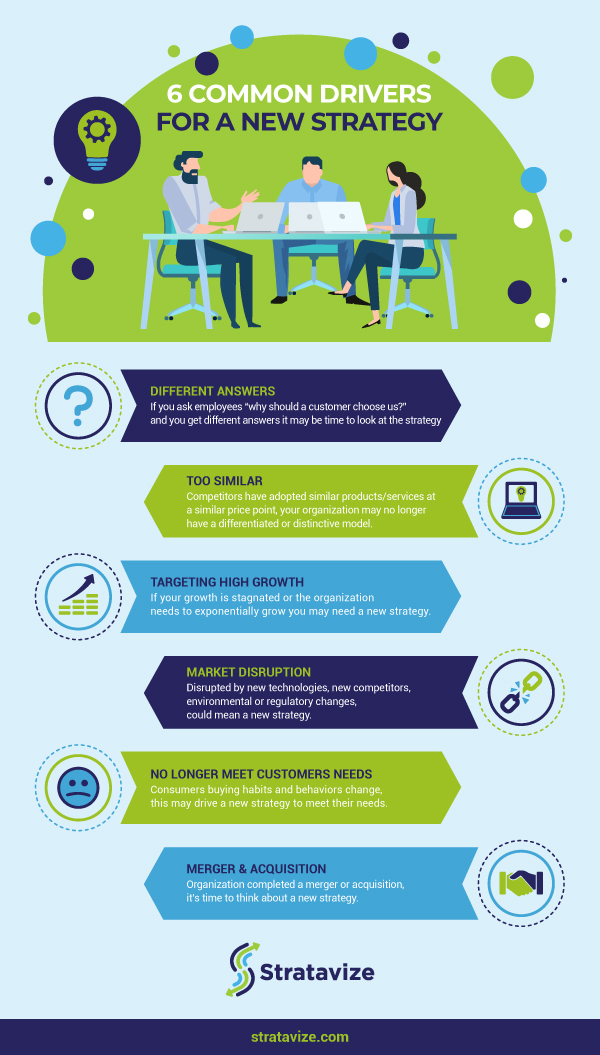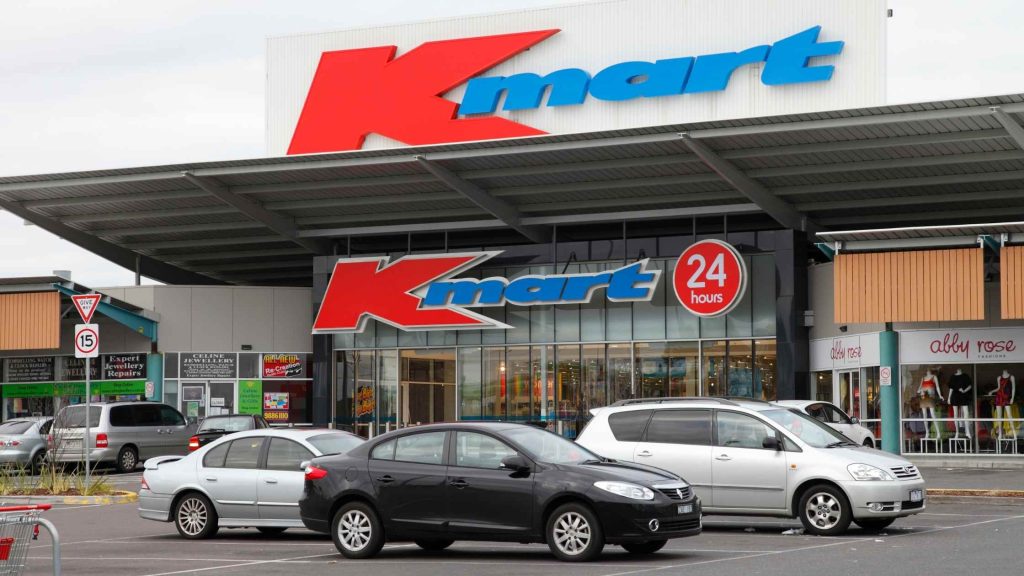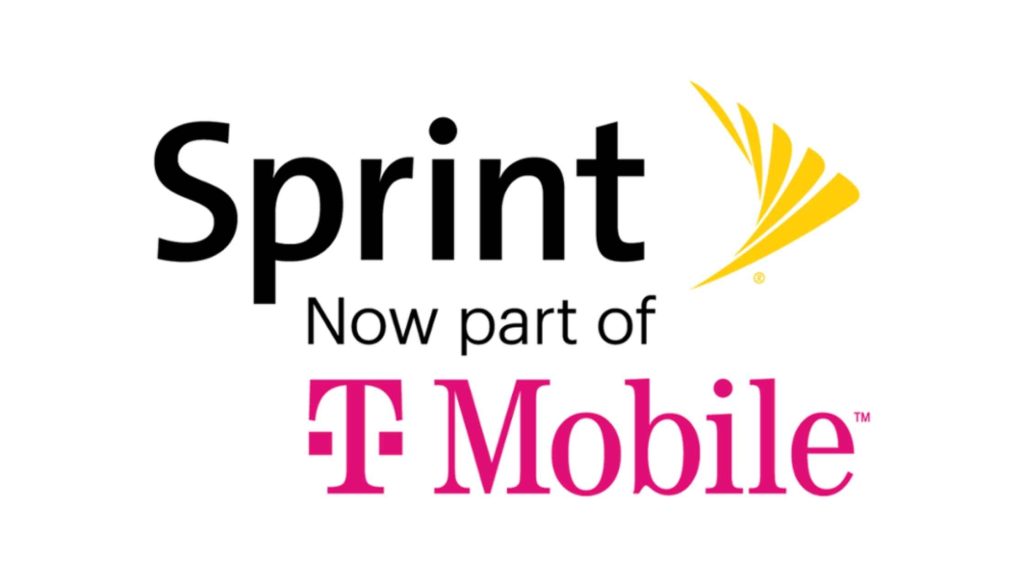6 Common Drivers for a New Strategy
Is it time for a new strategy? It might be or it might not be.
Sometimes, I wonder if there is a Bat-Signal that flashes “Strategic Planning Time.” Or, maybe it’s more like K-mart’s Blue Light Special that starts spinning indicating it’s time for CEOs to pull their teams together and work through two days of strategic planning. Whether we are speaking to a group of leaders or working with a client one-on-one, we often hear the same question:
Is it time for a new strategy?
In another article, we talked about the difference between a strategy and a marketing plan. The strategy is an organization’s value proposition, their go-to-market differentiator, this could be a solution that is better, faster, cheaper (price), or newer/unique. Strategy drives marketing, operational effectiveness, planning, and more. But, how do you know if it’s time for a new strategy?
6 Drivers For Organizations to Reimagine Their Strategy:
Some would argue that when an organization, changes leaders, the act of hiring a new leader triggers a new strategy. Leaders should not drive a new strategy, the business does. Leaders can step into a great strategy, but if the organization’s tactics are not working, the goals or objectives need to change, or the business model needs to be updated. The inability to execute often drives leaders to believe they need a new strategy.
These challenges fall into operational ineffectiveness and not strategy. If your organization is experiencing any of these drivers, it may be time to pull the team together.
6 Common Drivers
1: Cannot clearly articulate why the organization is unique in its industry
This is usually the biggest reason for our clients to call us. It’s a quick and easy exercise to find out if your organization is unique. Ask yourself, the leadership team, and employees “what makes us different than our competitors?”. If you varied answers, the group is not telling the same story. You may need a new strategy and to gain alignment on WHY the organization is going to market differently.
2: No longer a differentiated model
A great strategy can be copied fast in today’s market and technology advancements. If your organization was once unique and now it’s not, it’s time to reimagine your value proposition. If you get different answers or you hear “our employees are what makes us different” – you don’t have a clearly defined differentiator.
3: Targeting high growth (>15-20%)
If your growth is stagnated or the organization needs to exponentially grow you may need a new plan. As famously quoted “what you got here will not get you there”. It’s very likely you will need to revisit your plan to achieve high growth.
4: Big market disruptor
Most industries are being disrupted by new technologies, new competitors, and environmental or regulatory changes. If your organization has felt significant industry change (let us be honest, who hasn’t?) then it may be time to step back and envision a new future and new strategy.
5: Products/Services/Solutions No Longer Meeting Customer Needs
Sears and KMART are classic examples of an organization that refused to accept its products no longer met the needs of changing customer behavior. Consumers change, and organizations must be tracking the behavior changes and respond by re-evaluating their strategic positioning.
6: Merger/Acquisition
GE is a great example of not re-visiting their strategy and understanding who they serve after many mergers and acquisitions. I love how Roger Martin articulated this in HBR’s Podcast. The bottom line GE made M&A its strategy which lead to its demise.
Is it time for a new strategy?
Whether your organization is experiencing a lack of direction, a lack of value proposition, experienced big disruption, needs to grow, change products, or has just completed a merger or acquisition, it’s time to think about a new value proposition.
What’s driving your organization’s new strategy?
Never Miss A Story
Want to hear more from the Stratavize Team? Sign up to join our Monthly Insights & Spotlights for a monthly email.
Follow Stratavize on these social platforms Facebook, Twitter, Instagram, and Stratavize’s LinkedIn business page.
Interested in learning more about how Stratavize serves our clients as a strategy facilitator, project managers, and more? See our unique approach to strategy design and implementation.








